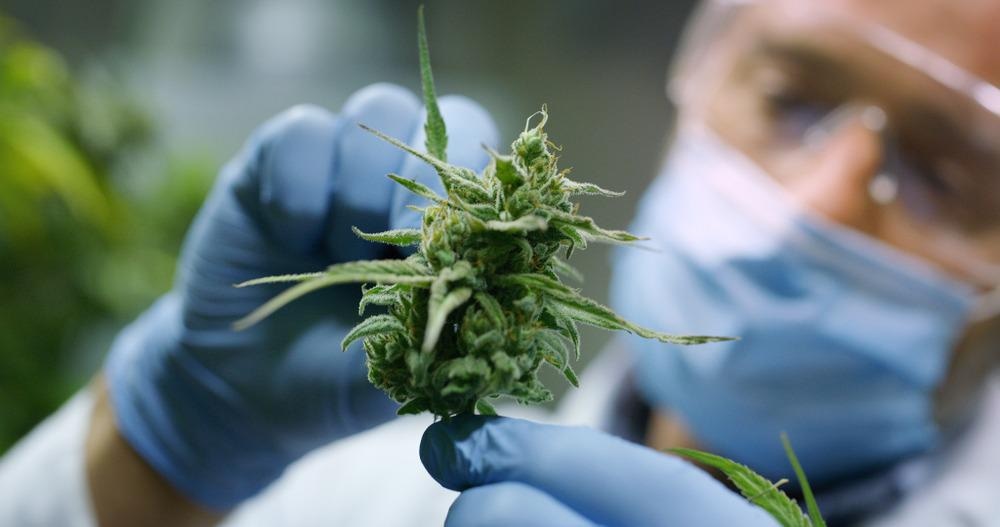Numerous analytical techniques have been established to detect, quantify, and analyze cannabinoids and various other compounds found in the cannabis plant in the past decade. Detection of cannabis is essential for several reasons, including public health and the enforcement of narcotics laws. Here, we discuss the use of optical spectroscopy in detecting cannabis, why it is essential, and how cannabis detection technology will likely develop.

Image Credit: HQuality/Shutterstock.com
Optical Spectroscopy Methods for Detecting Cannabis
While a wide range of techniques has been established for the detection of cannabis, optical spectroscopy methods offer certain benefits, including:
- Speed
- Real-time analysis
- High throughput
- Minimal requirements for sample preparation
- Convenience
- Relatively low cost
- Can be used in a variety of settings, including within a traditional laboratory setting, stationary in the field, or via a mobile platform.
Laser-Induced Breakdown Spectroscopy (LIBS)
LIBS is a rapid chemical analysis technology that utilizes a short pulse of laser light to produce micro-plasma on the surface of a sample, allowing for elemental analysis. The emerging atomic emission-based solid sampling method has numerous applications.
In a 2015 study published in Forensic Science International, scientists demonstrated its use as an optical spectroscopy method for cannabis detection.
In the study, scientists evaluated the analytical performance of LIBS, inductively coupled plasma mass spectrometry (ICP-MS), laser ablation inductively coupled plasma mass spectrometry (LA-ICP-MS), and X-ray microfluorescence (μXRF) for performing accurate elemental analyses on cannabis.
The first-of-its-kind study found a good correlation between the efficacy of the four techniques. The results also showed that LIBS, alongside ICP-MS and LA-ICP-MS, are suitable for comparing cannabis samples from different sources due to their high discriminating powers.
Raman Spectroscopy
Raman spectroscopy is an optical, vibrational analytical method that produces highly detailed information regarding the molecular composition and structure, phase and polymorphy, crystallinity and molecular interactions of a sample. The technique has been developed to analyze the samples of cannabis for classification and testing the quality and safety of the plant.
A 2007 study published in the journal Vibrational Spectroscopy demonstrates how the vibrational measurements of Raman can be directly applied to plant tissues and extracts isolated via hydro-distillation or solvent extraction.
The technique was rapid and reliable in chemotaxonomy characterization. The study demonstrated that vibrational spectroscopy methods could be used reliably to perform fast quality checks of cannabis plants, which will likely be helpful for the medical cannabis industry.
Surface-enhanced Raman spectroscopy was also investigated. Scientists concluded that the technique could be helpful in potency testing, pesticide screening, analysis of moisture content and mycotoxins, and terpene profiling.
Runtime Cavity Ringdown (rtCRD) Spectrometry
rtCRD spectrometry is an emerging technique, the uses of which are currently being explored by many fields of science, including military, security, environmental, and pharmaceuticals.
There is some recent evidence to show that the technique can be adapted into a relatively cost-effective and sensitive method for analyzing cannabis. Scientists have shown that the method can perform high-resolution infrared absorption spectroscopy for vapor analysis, produce responses in near real-time, and is effective at performing residual solvent analysis. The technique will likely be further developed for applications in cannabis detection in the coming years.
Why Cannabis Detection is Important
Cannabis is being legalized worldwide, with more countries passing legislation to allow access to the drug for medical reasons each year. This has meant that the production of cannabis has ramped up.
Cannabis farms are expanding, and companies who may have never been in the business of cannabis farming are trying their hand at something new. Because of this rapid expansion, coupled with the psychoactive properties of cannabis, it has never been more critical to run stringent quality control checks on cannabis products entering the market. Therefore, new effective and reliable techniques are required.
Law enforcement agencies are under constant pressure to clamp down on the use and trafficking of illegal drugs, such as cannabis (for recreational use).
Therefore, analytical methods that can detect cannabis are in high demand for the police and other law enforcement agencies. Those that are portable and can produce results rapidly are in particular demand.
New Developments and Future Directions
There will likely be a push toward developing methods that can be used in the field.
Work on portable devices that work via online platforms is predicted to be next in drug detection as a whole, not just cannabis detection.
References and Further Reading
Boyson, T., Rittman, D., Spence, T., Calzada, M., Kallapur, A., Petersen, I., Paul Kirkbride, K., Moore, D. and Harb, C., 2014. Pulsed quantum cascade laser based hypertemporal real-time headspace measurements. Optics Express, 22(9), p.10519. https://pubmed.ncbi.nlm.nih.gov/24921754/
El-Deftar, M., Robertson, J., Foster, S. and Lennard, C., 2015. Evaluation of elemental profiling methods, including laser-induced breakdown spectroscopy (LIBS), for the differentiation of Cannabis plant material grown in different nutrient solutions. Forensic Science International, 251, pp.95-106. https://www.sciencedirect.com/science/article/abs/pii/S0379073815001449
Schulz, H. and Baranska, M., 2007. Identification and quantification of valuable plant substances by IR and Raman spectroscopy. Vibrational Spectroscopy, 43(1), pp.13-25. https://www.sciencedirect.com/science/article/pii/S0924203106001263
Disclaimer: The views expressed here are those of the author expressed in their private capacity and do not necessarily represent the views of AZoM.com Limited T/A AZoNetwork the owner and operator of this website. This disclaimer forms part of the Terms and conditions of use of this website.